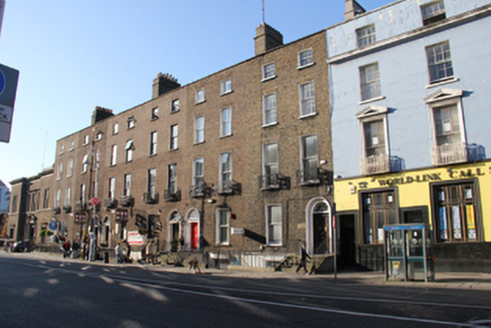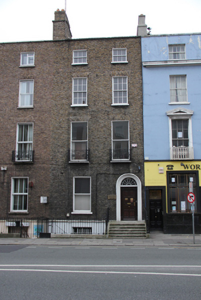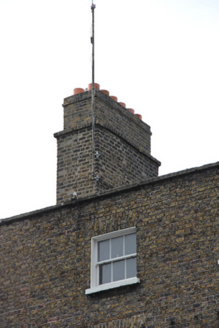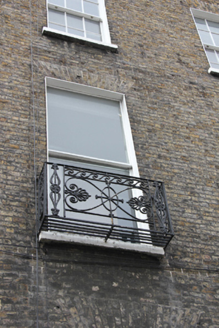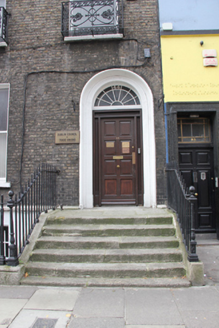Survey Data
Reg No
50010166
Rating
Regional
Categories of Special Interest
Architectural, Artistic, Historical, Social
Original Use
House
In Use As
Office
Date
1820 - 1840
Coordinates
316283, 234754
Date Recorded
04/10/2011
Date Updated
--/--/--
Description
Terraced two-bay four-storey house over raised basement, built c.1830, now in office use. Pitched roof, hidden behind parapet wall with granite coping. Stepped chimneystacks to both party walls with terracotta pots, yellow brick to south, rendered to north. Yellow brick walls laid in Flemish bond with lime pointing set on granite plinth course over rendered basement walls. Gauged brick flat-arched window openings with patent rendered reveals, painted granite sills and early replacement timber sash windows with convex horns, three-over-three pane to third floor, six-over-six to second floor and basement, and single-pane to ground and first floors. Decorative cast-iron balconettes to first floor and iron grille to basement. Gauged brick round-headed door opening with moulded masonry surround, reeded inset surround on plinth blocks and replacement hardwood door with spoked fanlight. Door opens onto granite platform with cast-iron boot-scrape and six granite steps. Platform and basement enclosed by wrought-iron railings and cast-iron corner posts on moulded granite plinth wall with replacement iron gate and steel steps to basement.
Appraisal
Gardiner Street Lower was laid out by Luke Gardiner in 1790, with the route leading from the Custom House to Mountjoy Square, and designed to frame the view to the Custom House. As part of a uniform terrace this property makes an important contribution to the streetscape in close proximity to one of Dublin's finest Georgian vistas. The building also has some social significance for being the base of the Dublin Council of Trade Unions (DCTU) since 1926, with Jim Larkin reputed to have held meetings there and whose chair and the table, at which the Declaration of Independence was signed, remaining in situ. In addition, the first trade union strike for women was organised from this building. The original doorcase and much of the interior plaster decoration was removed in the 1920s, as they were considered inappropriate and too bourgeois.
